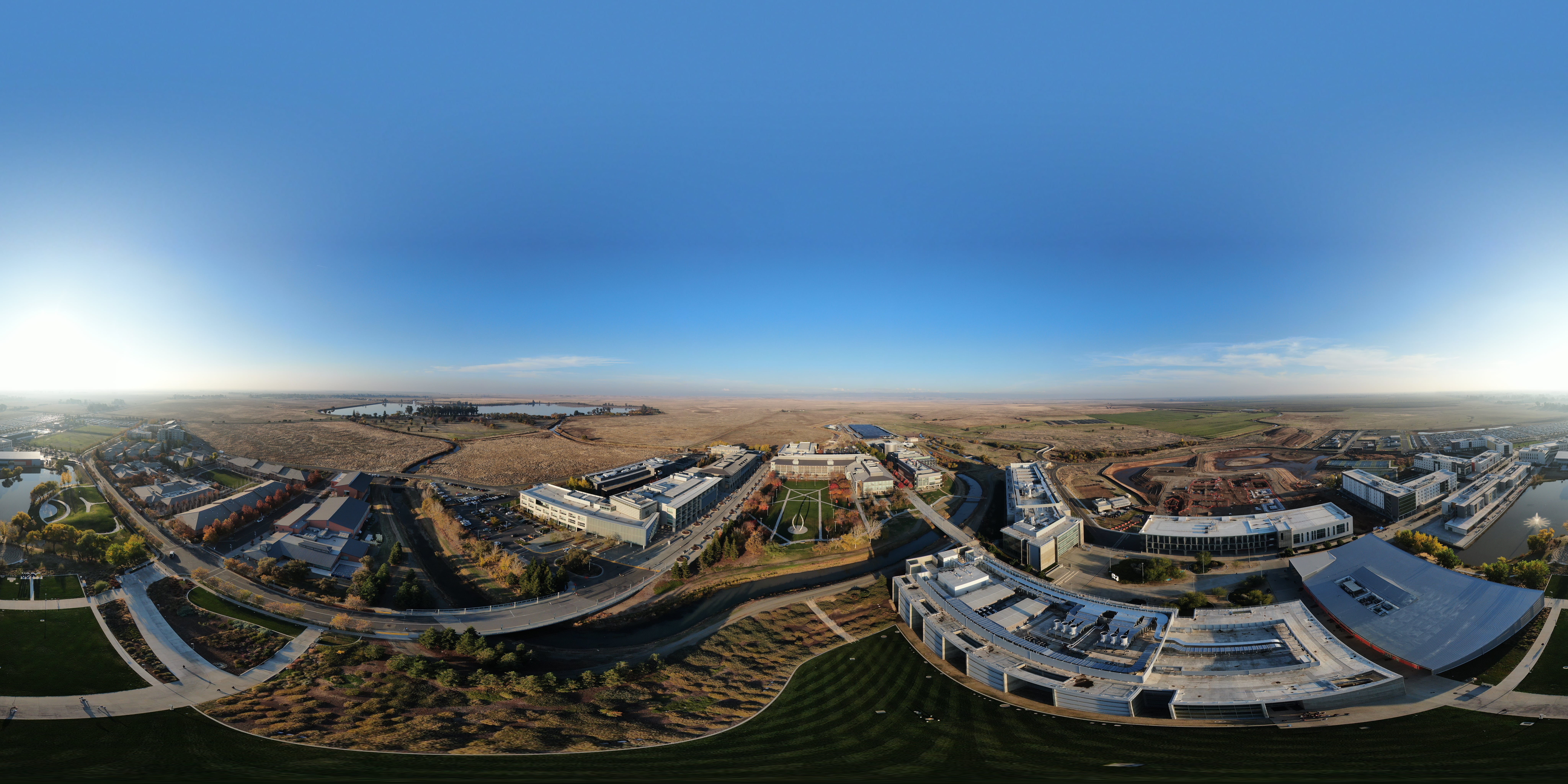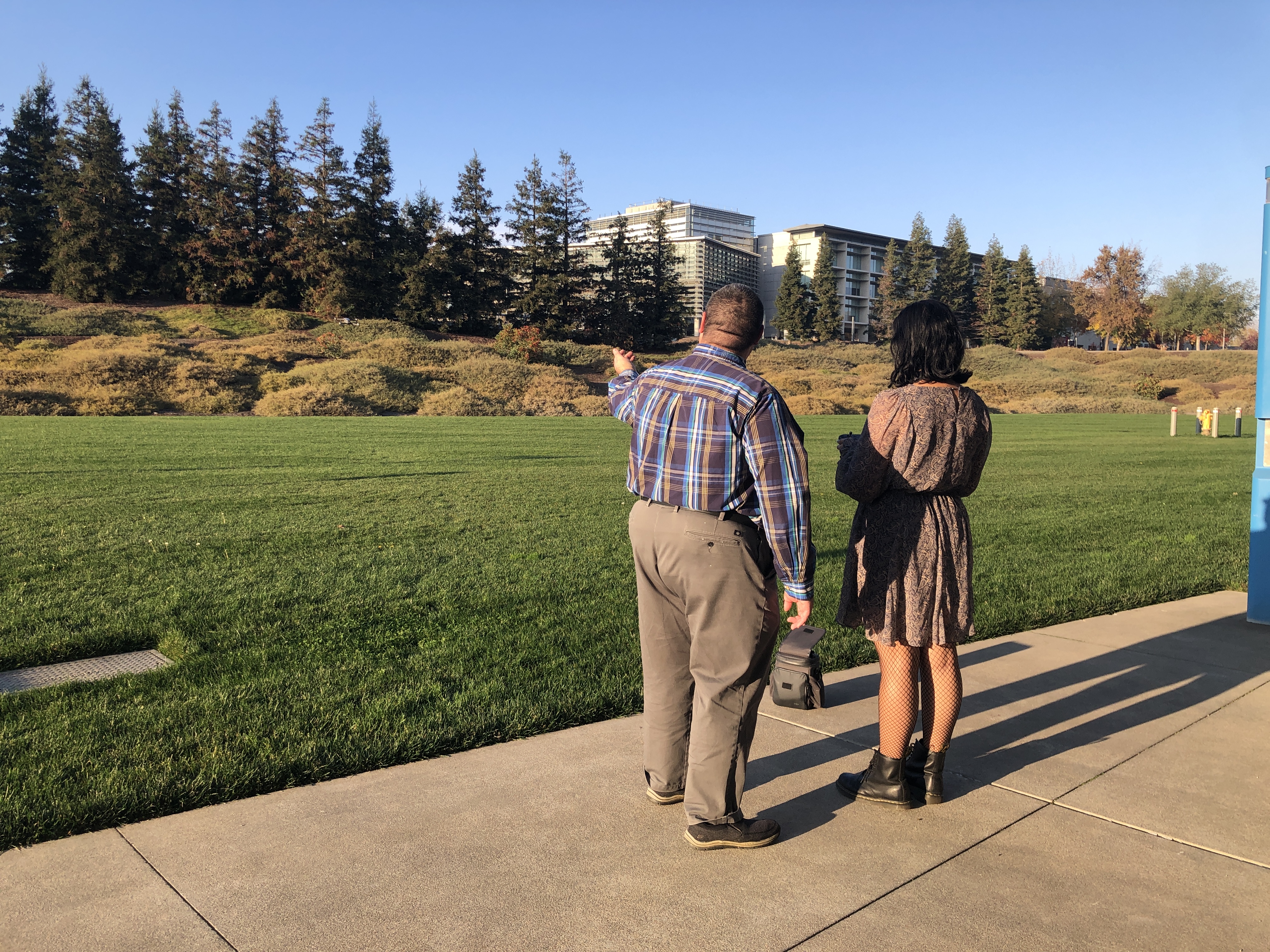By: Jose Meza-Pantoja

Our final guest-led field trip was hosted by Dr. Stark, who on top of being a professor and leading drone research efforts at UC Merced, is also responsible for approving and directing drone use in the entire University of California system. Stark introduced us to some of the interesting ways that drones are being used on-campus. We soon found out that drones have much more purposes than just taking simple aerial shots, as they should! After all, as we were introduced to these uses, the drones we were sharing a room with had price tags ranging from a couple thousand to 40,000 dollars! Drone research soon turned out be fascinatingly versatile, from being used in the preserving and protection of endangered species, mapping 3D maps of different areas, to even chainsaw-wielding drones.
Stark began his lecture at the Mechatronics/Drones teaching lab with an introduction behind the science of drones and how these things can be used for new exciting uses. An example is the use of drones in the creation of 3D maps. Drones take images and survey lands at a very high altitude, and these resulting images give varying angles of different areas instead of being a faithful 2D representation of land. Combined with drone GPS capabilities, a drone can accurately survey land simply following preprogrammed instructions with little to no human intervention. The following images can be “glued” to create 3D environments that are astonishingly detailed, able to capture pebbles and rocks from hundreds of feet away.
These 3D mapping features give way to interesting applications, as Stark explained. The Vernal Pools Grassland Reserve regularly employs the use of drones for its own preservation efforts. An example is the use of drones to find burrows dug by a species of burrowing squirrel in order to keep an eye on endangered species. But this species, the California Ground Squirrel, aren’t themselves endangered; so why do we care about their homes? Well, their homes are necessary to the thriving of two other endangered species – the Burrowing Owl and the Tiger Salamander. By using 3D maps of the reserve and locating burrows dug by squirrels, we can have a better idea of how to locate the species and find out how well they’re doing.


After his presentation was finished, our field trip was moved out of the lab and we were taken to the lawn behind SRE, where we ended by seeing a drone in action and having the opportunity to fly the drone ourselves. While some aspects of drone research like 3D mapping and programming flights would take much longer than a single class period to master, flying the drones on its own was remarkably simple and the basics could be covered in less than 10 minutes. For all the science and potential applications for drones, sometimes all that’s needed is something that you’re able to control with a simple remote. Stark brought up the example of a researcher who needed to collect samples from the top of tall forest trees without the risk of falling. Drones proved to be an easy solution; simply attach a chainsaw to a drone and you’re able to collect tree samples from any height you want!
“What’d they use before drones were introduced?” asked someone from the audience.
Stark replied, “Oh, well before drones they just used shotguns.”
“Shotguns?!”
Stark laughed. “Yeah, they just aimed up and shot until they got the samples they needed.”
And with that, the drone returned to the ground and was powered off to be recharged inside the SRE building. We said our goodbyes and thanked Stark for the great presentation, ending off a semester of field trips that had taken us to familiar spaces, like the Dining Center and the Community Garden, to more exclusive spaces, like the Solar Panels and underground tunnels that connected UC Merced and kept it running. Through these field trips we learned and gained an appreciation for the campus we live in that most students simply never have the chance to. While this semester is over, this appreciation and knowledge of the campus will continue to live on and expand as students begin taking positions in work, research, and clubs; all enriched with the student connections made possible by the Carson House LLC.
Does this sound interesting to you? Are you interested in getting involved?
Please consider taking the course ME143, Introduction to Drones, available to aerospace and mechanical engineering students here at UC Merced; alternatively, you may also look into AIAA@UC Merced, the student-led organization which offers students of all majors the opportunity to get involved with many different types of aerospace projects.

